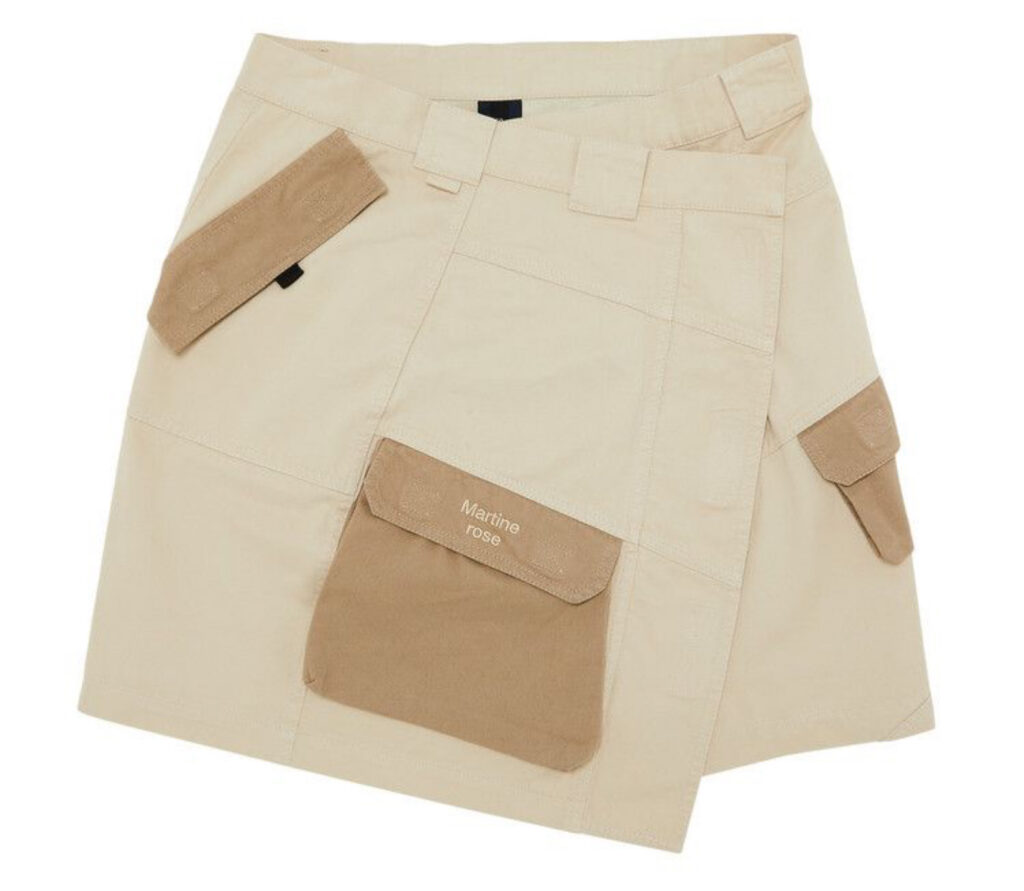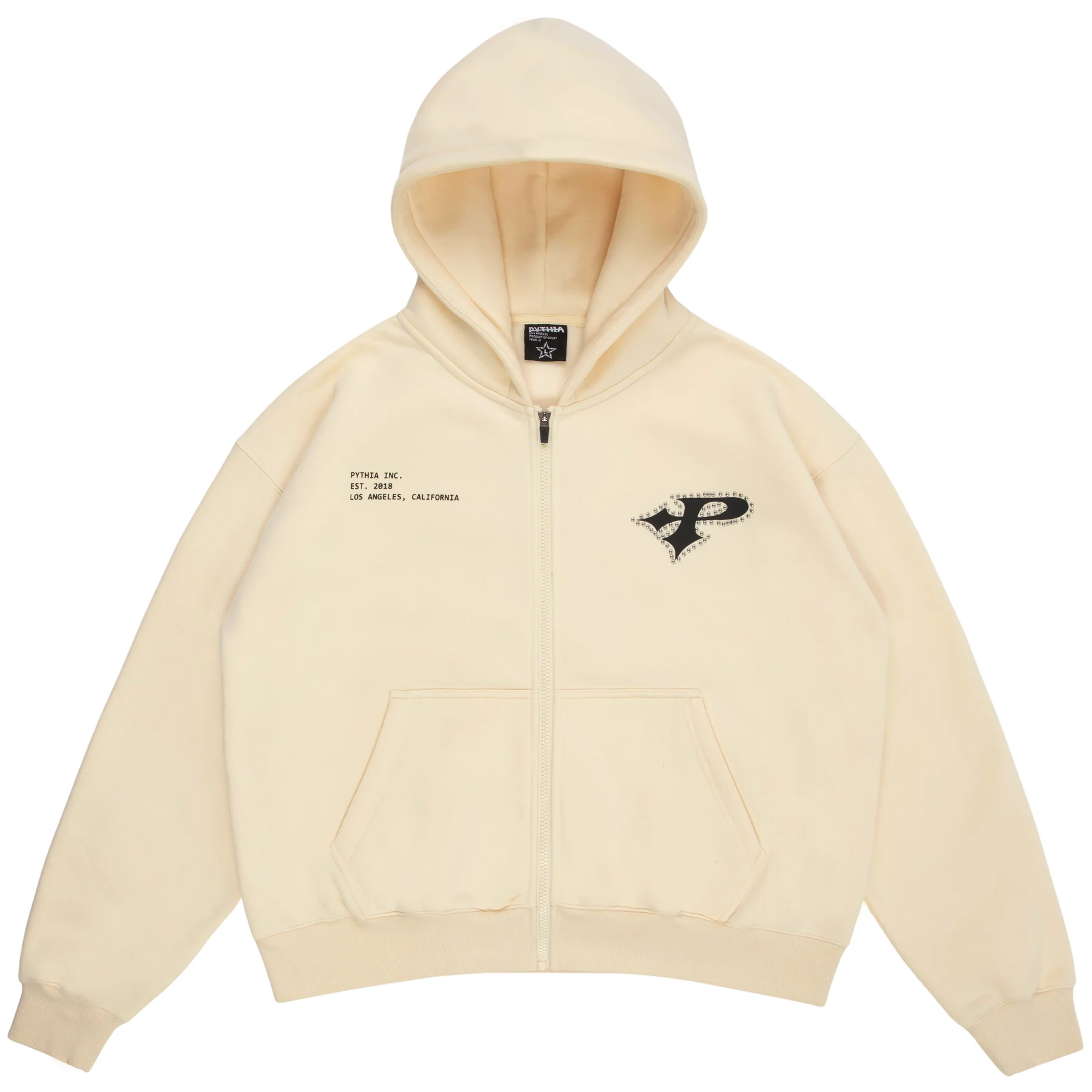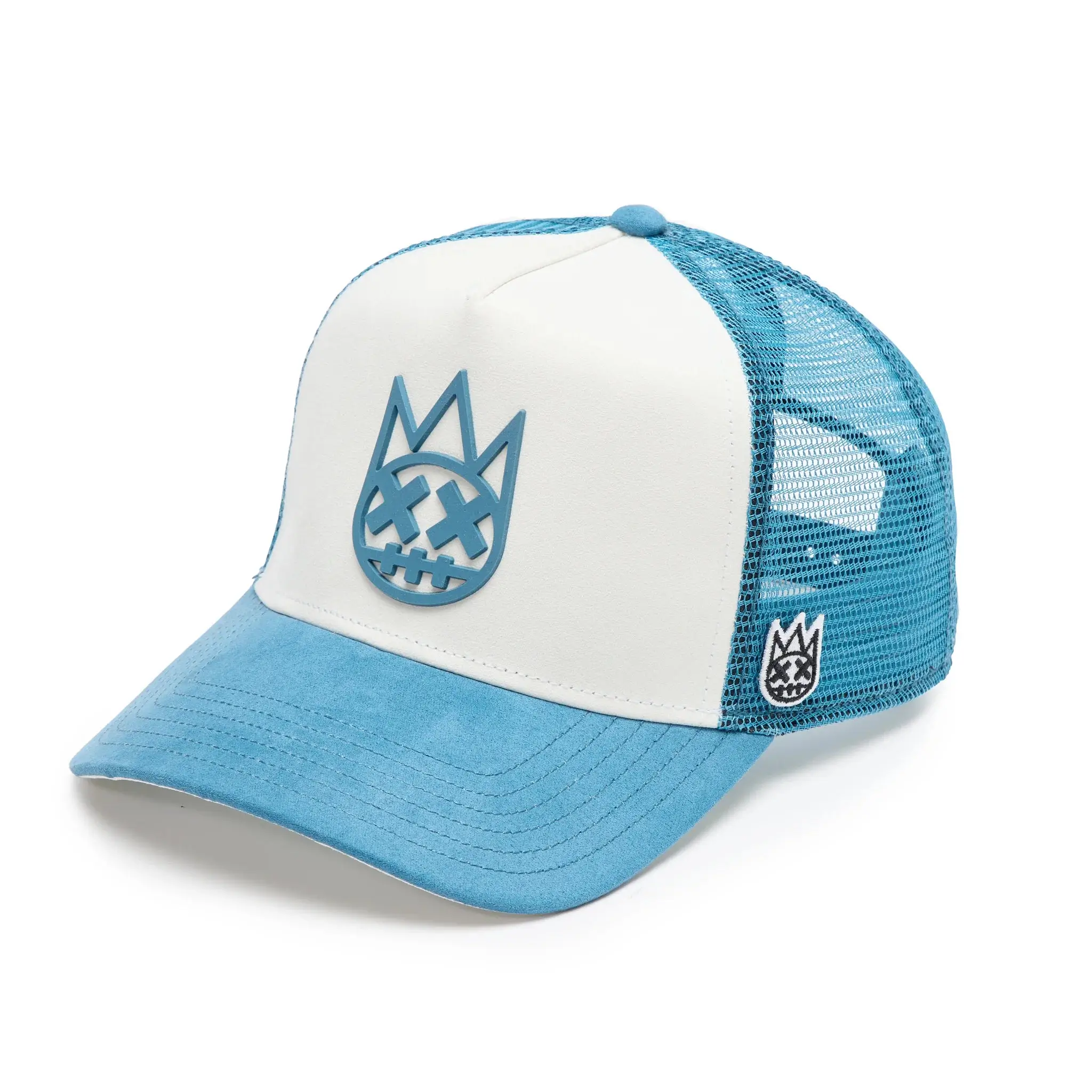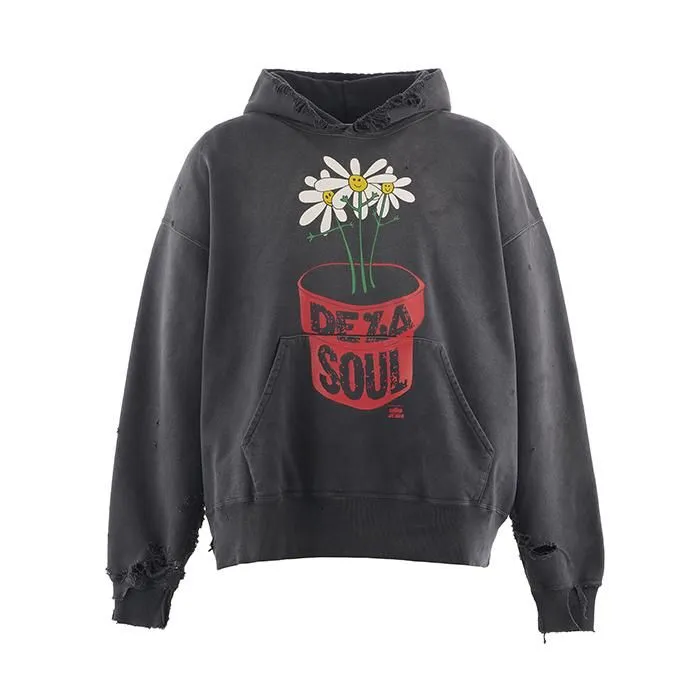
In an era where gender boundaries blur and utility merges with expression, few designers orchestrate disruption with the poise and control of Martine Rose. The Wrap Cargo Skirt in ‘Beige’ isn’t just another piece in a seasonal lineup—it’s a statement, a provocation, and a question mark wrapped in khaki tones.
This is not just fashion. It’s philosophy, stitched.
We’re living in a moment where fashion is mutating. Function is aesthetic. Workwear is highwear. Uniforms, once designed to erase identity, now express it. The Martine Rose Wrap Cargo Skirt is a perfect emblem of this shift. With its utilitarian DNA and subversive silhouette, it doesn’t whisper change—it announces it.
The Designer: Martine Rose and the Remix Ethos
To understand the skirt, you have to understand the mind behind it. Martine Rose has long been one of menswear’s quiet revolutionaries. Since founding her label in 2007, she’s blurred the lines between normcore, subculture, and luxury. Her approach is rooted in remix culture: borrowing, flipping, and recontextualizing.
Born in South London to Jamaican-British parents, Rose’s perspective is unique—a collision of rave culture, reggae sound systems, 90s streetwear, and working-class uniforms. That context gives weight to every design choice. When she designs a skirt that riffs on a cargo pant, it’s not an accident—it’s commentary.
The Skirt: Anatomy of Subversion
Let’s break down the Wrap Cargo Skirt ‘Beige’ in precise terms. At a glance, it’s deceptively simple: a midi-length wrap skirt made from sturdy cotton twill, with oversized cargo pockets and a tonal tie waist. But simplicity is where it starts, not ends.
Form and Structure
The silhouette is straight-cut but with generous overlap, creating dynamic movement. The fabric is rigid enough to hold its shape but soft enough to wrap and drape. This balance is key: it echoes the precision of military tailoring while allowing the garment to breathe and flex.
Color and Texture
The color—“beige”—feels intentionally understated. In a world obsessed with dopamine dressing, Rose opts for what might seem safe at first glance. But the neutrality of beige is its own kind of weapon. It forces the viewer to pay attention to the form, the cut, the construction.
Texture-wise, the skirt leans into the roughness of workwear. The cotton twill isn’t polished or pristine; it carries an edge, a rawness that defies delicate femininity or slick minimalism. It’s not here to please—it’s here to challenge.
Pockets and Practicality
The cargo pockets are more than ornamental—they’re functional. Deep, boxy, unapologetically utilitarian. And they’re placed in ways that disrupt traditional ideas of proportion. The eye is drawn down the leg, elongating and altering the body’s geometry.
This is not just practical—it’s political. Pockets, historically denied to women, are a site of power. Here, Rose offers not one but several, reclaiming function and turning it into a feminist gesture.
Let’s talk about what this skirt means:
In patriarchal fashion history, skirts have long been feminized, even fetishized. Yet here’s a skirt that carries the DNA of traditionally male garments—cargo pants, military uniforms, workwear. It queers the garment. It refuses easy gendered readings.
It’s also a garment in motion. The wrap element makes it adjustable, unstable, and adaptable. It doesn’t lock the body into a rigid form. It lets the wearer decide how it fits, where it falls, how it moves. That’s autonomy by design.
And then there’s the cultural crossover. By combining silhouettes from streetwear, military garb, and classic tailoring, Rose speaks to a broad, layered audience. The skirt could sit on a runway, in a rave, or on a city street and still make sense. It’s fashion with range.
Styling: Who Wears It, and How
This skirt isn’t for everyone—and that’s the point. It demands intention. But for those willing to engage, the styling possibilities are vast.
Paired with a crisp white tank and chunky boots, it screams post-punk minimalism. Worn with a boxy bomber jacket and vintage sunglasses, it channels 90s Britpop nonchalance. Dressed up with a silk blouse and loafers, it becomes modern corporate armor.
The androgyny of the piece means it plays across gender lines. It’s just as striking on a cisgender woman as it is on a non-binary body or a man willing to push boundaries. This versatility is its superpower.
Reception: Industry and Culture
Critics have praised Martine Rose’s consistent vision—her ability to stay rooted in subculture while engaging the high-fashion elite. This skirt has appeared in editorials from i-D to Another Magazine, often styled on male-presenting models, challenging gender norms head-on.
In street style circles, the piece has been adopted by stylists, influencers, and musicians who operate on the fringe. It’s the kind of item that travels through culture sideways—not via red carpets but underground venues, fashion weeks, and Instagram grids curated by people who know what’s next.
The Wrap Cargo Skirt is not just bought—it’s chosen.
Comparison: What Sets It Apart
In a market filled with cargo skirts—from fast fashion to luxury—what makes this one stand out?
- Construction: Unlike mass-market versions, the tailoring here is deliberate and refined. Seams are reinforced. Draping is calculated.
- Material Choice: The cotton twill is heavy-duty, meant to last. It feels more like gear than clothes.
- Design Language: While many brands use cargo elements as surface-level trend cues, Rose integrates them into the soul of the garment.
- Narrative: This skirt tells a story. You’re not just buying a look; you’re entering a dialogue—about identity, labor, culture, and power.
Legacy and Future
The Martine Rose Wrap Cargo Skirt isn’t a seasonal one-off—it’s a piece that will ripple through future collections, inspiring others to reconsider what a skirt can be. Already, its influence can be seen in other designers incorporating wrap silhouettes, oversized pockets, and workwear fabrics into women’s and unisex lines.
This skirt will age well, both in terms of style and physical wear. The fabric will crease, fade, and soften, developing a patina that reflects the life of its wearer. It’s built to evolve, not expire.
Flow
The Martine Rose Wrap Cargo Skirt ‘Beige’ is not flashy. It doesn’t rely on logos, prints, or gimmicks. Its radicalism is quieter, deeper. It asks: What does it mean to wear something that defies categorization? What happens when you wrap your body in contradiction?
At a time when so much fashion feels performative, this skirt feels personal. It doesn’t scream for attention—it earns it. It doesn’t sell an identity—it invites you to construct one.
And maybe that’s the most subversive move of all.
No comments yet.








